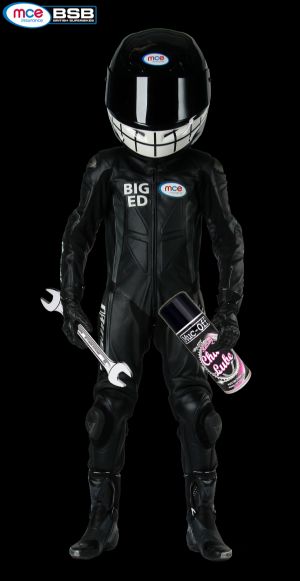Big Ed's Workshop - Brake service

Brakes are a highly important part of any motorcycle and they need maintaining. Here's my guide to giving your brakes a service.
Drum Brakes:
Are the brakes starting to feel spongy? Do they squeak? Are they getting sharp? Or has the feel of them changed? Any of these occurrences indicates it might be worth having a look.
Firstly check the cables running from lever to drum. It may just need adjusting, which can be done at either end, adjust it up till it feels right. These cables also deal with a lot of weather and wear and tear; it's always a good idea to keep them lubricated. It'll mean they'll last longer and keep your brakes smooth. Simply give a good spray around all the moving parts and pump the brake whilst applying it into the cable.
It's time to get the wheel off. Once it's off take a look inside the hub, you'll probably find a lot of dust (from the shoes) clear that out. Then give the inner hub a good rub down with wet and dry. This will give some grip back to a surface which can get very smooth. Check the shoes themselves next; they should have a decent amount of material on there. If it looks worn, old or has worn unevenly I'd recommend changing them.
To do this pop the shoes off, this can be a little tricky as they are spring loaded so watch your fingers! Once they're off it's best to do a bit more dismantling and lubricating. Remove the brake arm (the lever that attaches to the brake cam, which runs through to the shoes). They'll be a spring on here too, make sure you remember how it all goes together and in what order! Once the brake arm is off you'll be able to remove the cam. Give everything a clean and then grease it all up. Put all the parts back together and position new shoes. You'll know if you've got something wrong as the cam won't line up properly. Replace the wheel and ride and enjoy!
Disc Brakes:
I'll run off the example of a single sided front brake for this. Firstly check the condition and level of your brake fluid. Up on the handlebars by the lever you'll find the brake reservoir. This will have a window on it with a min and max mark, obviously the fluid should be in-between these. Open the top of the reservoir and check the colour and consistency of the fluid. If it's black or oily, it'll need changing. It should be a clear golden brown colour.
Pads are also another easy thing to check. You should be able to see them touching on the disc inside the caliper. Like the shoes check the material that's left on them. If it's non-existent or more worn on one side you'll want to get in and change them. If the pad material is low it may even fail an MOT depending on the tester.
Right let's get involved, I find the best place to start with this is getting the pads off. They're usually held in place by pins which can be either pulled straight out or undone with an Allen key. Once the pins are removed the pads should just slide out. You probably want to do this with the caliper removed and you'll be able to get to the pads easier. Now with the pads out of the way you'll be able to see the pistons. To give the brakes a proper service you'll want to get these out. Pump the brake lever and you should see the pistons begin to move outwards, make sure all the pistons are free and moving (these are very hard to get out sometimes!) The Hydraulic in the brake is the strongest push you've got so make use of it. Be prepared with a container for the brake fluid as this will pour out once the pistons are free.
Now you can get a good look at the inside of the caliper. Remove it completely from the motorbike now and dismantle it further. Remove the rubber piston rings (where much of the corrosion will lie) and replace or where possible service them. Usually in this situation the top set of rings will be the most damaged as they take much of the weather. With new rings in place and the bowls cleaned out return the pistons to their original positions, put the caliper back together and re-attach to the bike.
Now comes the fun part, bleeding the brakes. This can take a lot of patience and even the most practised of mechanics still sometimes have to spend a bit of time on this. Basically what we're doing is returning the fluid into the system without any air pockets. I usually tend to start from the bottom end, pumping fluid in at the caliper through the bleed nipple and waiting for it to bubble at the top reservoir. That'll mean the system is filled again. Then it's just a case of bleeding it out from the other end. Attach a bottle with some brake fluid in to the bleed nipple via a tube (this will make sure air does not return into the caliper as you're bleeding). Pump the brake, releasing the bleed nipple from time to time which should release some air bubbles. Repeat this process until the brake becomes hard and is working correctly. This is the point that may take time. If you're really having trouble, there's probably some trapped air, try pushing more fluid in from below then repeat the main bleed again! Like I say it's a lot of trail and error with this!
So that's a basic look into servicing brakes! Hope it helps out some of you, feel free to drop me a line if you want to know more!
21.07.14 - Big Ed





